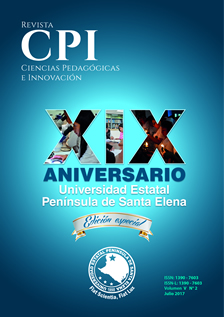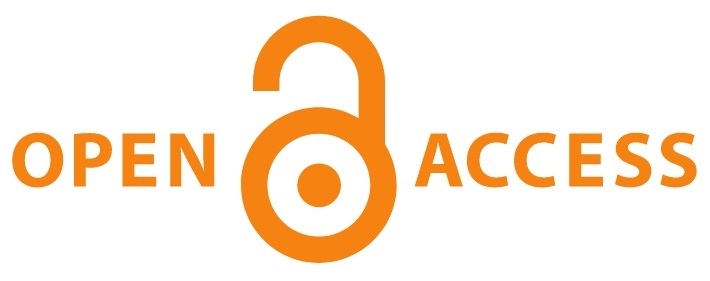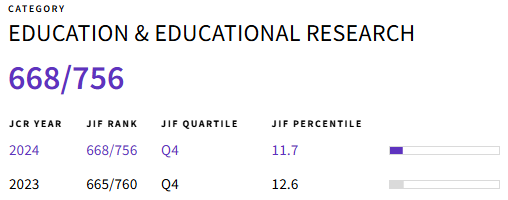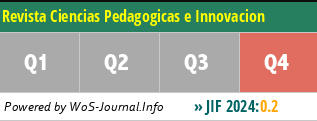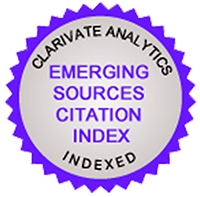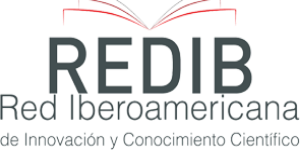Whatsapp as an english teaching tool for improving the listening skill to students of second high school BGU at Unidad Educativa Liceo Cristiano Peninsular. La Libertad, Province of Santa Elena
DOI:
https://doi.org/10.26423/rcpi.v5i2.166Keywords:
WhatsApp, Mobile Learning, Smart device, Applications,, Listening SkillAbstract
The present research paper established as an objective the use of WhatsApp as an English teaching tool to improve the listening skill on 15 students from second Bachillerato BGU at Unidad Educativa Liceo Cristiano Peninsular, in Santa Elena Province, Ecuador. The participants of this group were allowed to use WhatsApp in a smart device, whose principal characteristics are the usefulness of audio message sending and video sharing, this interactions allowed to enhance the listening skill on this students sample through the practice of songs, video clips, lectures and podcast. For the development of this research it was required to apply the qualitative method by implementing techniques such as: Focus group, observation and interviews. The results of these analysis demonstrated that the application of mobile learning methodology, generated a meaningful learning on the listening skill of students among 12% and 20% where they passed from A2.1 toA2.2 level in listening skill according to Common European Framework Reference. These outcomes demonstrated that teachers must accept the Epistemological Rupture that establishes to change the traditional English teaching methods by applying Revista Ciencias Pedagógicas e Innovación, Vol. V No. 2 (enero-junio 2017), pp. 1-6|2modern methods according to the need of the digital natives in the current formal an informal learning environments
Downloads
References
Arévalo, G. y. Modelos Blended Learning en la Educacion Superior. 2004. Obtenido de eventos,spc: http://eventos.spc.org.pe/jpc2007/MyReview/FILES/p56.pdf.
Dorrego, E. Comunidad Virtual Tecnologia Educativa. 2004. Obtenido de eductec.rediris.ec: http://www.um.es/ead/red/M6/dorrego.pdf
Ferrate, G. Universidad y Nuevas Tecnologias. 2004. Obtenido de www.uces.edu.ar/.../nuevas-tecnologias-de-la-informacion: http://www.uces.edu.ar/departamentos/investigacion/archivos/nuevas-tecnologias-de-la-informacion-informe-final.pdf
Garcia, L. Un concepto integrador de enseñanza a distancia. 1991. Obtenido de info.uned.es/: http://info.uned.es/catedraunesco-ead/articulos/1991/un%20concepto%20integrador%20de%20ensenanza%20a%20distancia.pdf
Moore, M. Distance Education: A System View. Usa: Wadswoeth publishing company Routledge. 2007
Moreira, M. Internet como espacio de adqusición. 2000. Obtenido de www.icono14.net/ojs/index.php/icono14/article/.../21: http://tecnologiaedu.us.es/cuestionario/bibliovir/tres.pdf
Turpo, O. Contexto Y Desarrollo de la Modalidad Educativa Blended Learning. 2010. Obtenido de redalyc.uaemex.mx/pdf/140/14012507002: http://redalyc.uaemex.mx/pdf/140/14012507002.pdf
Hernández Sampieri, R. Metodología de la Investigación (Tercera ed.). México: McGraw-Hill. 2010
Burton, J. E-learning:What is happening in e-learning in primary care. 2005. Obtenido de www.web109.epnet.com: http://web109.epnet.com
Bouhnik, D. &. WhatsApp goes to school: Mobile instant messaging between teachers and students. Journal of Information Technology Education: Research, 13, 2014. Retrieved from http://www.jite.org/documents/Vol13/JITEv13ResearchP217-231Bouhnik0601.pdf, 217-231.
Vie, S. Digital Divide 2.0: “Generation M” and Online Social. Computers and Composition 2008. 25, 9–23..
Vandepitte, D. S. Apps for mobile language learning:. GERMANY: HOGENT. 2012
Looi, C. S. Leveraging mobile technology for sustainable seamless learning: a research agenda. British Journal of Educational Technology. 2010. 41(2), 154-169.
Joshi, T. B. A Study of Students’ Experiences of Mobile Learning. Global Journal of HUMAN-SOCIAL SCIENCE: 2008. H, 22-36.
Richards, J. &. Approaches and methods in language teaching. Cambridge Universiiy Press.Cambridge. 1986.
Wilson., J. J. How to Teach Listening. Education. 2008. 192 pages. 0 Reviewshttps://books.google.com/books/about/.html?id= : Pearson Education,.
Mendelsohn, D. There are strategies for listening. TEAL Occasional Papers. 1984. 63-76.
Matear, A. English language learning and education policy in Chile. Can English really open doors for all? Asia Pacific Journal ofEducation, 2008. 28(2), 131-147.
Harmer, J. How to teach English. White Plains. NY:: Pearson Longman. 2003
Field, J. Listening in the language classroom. ELT journal, 2010. 64(3), 331-333.
Sharma, S. &.. Web services architecture for m-learning. Electronic Journal on e-learning. 2004. 2(1), 203-216
Winters, N. What is mobile learning? In M. Sharples (Ed.), Big issues in mobile learning. Nottingham: Kaleidoscope. 2006 [Online]. http://hal.archives-ouvertes.fr/docs/00/19/02/54/PDF/Sharples_Big_Issues.pdf [08.02.2012]., (pp.5-9).
Kukulska-Hulme, A. Will mobile learning change language learning? ReCALL. 2009. 21(2), pp.157-165.
Downloads
Published
Issue
Section
License
El titular de los derechos de autor de la obra, otorga derechos de uso a los lectores mediante la licencia Creative Commons Atribución-NoComercial-CompartirIgual 4.0 Internacional. Esto permite el acceso gratuito inmediato a la obra y permite a cualquier usuario leer, descargar, copiar, distribuir, imprimir, buscar o vincular a los textos completos de los artículos, rastrearlos para su indexación, pasarlos como datos al software o usarlos para cualquier otro propósito legal.
Cuando la obra es aprobada y aceptada para su publicación, los autores conservan los derechos de autor sin restricciones, cediendo únicamente los derechos de reproducción, distribución para su explotación en formato de papel, así como en cualquier otro soporte magnético, óptico y digital.

